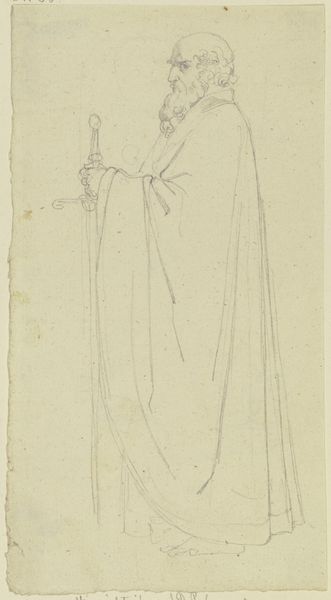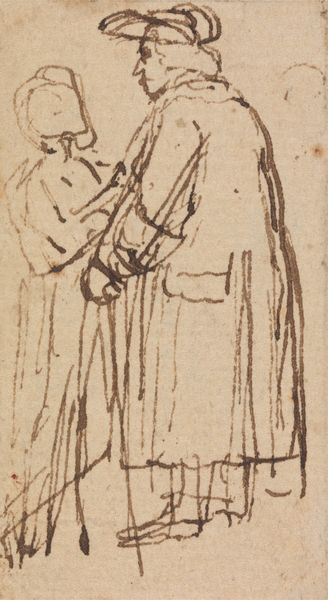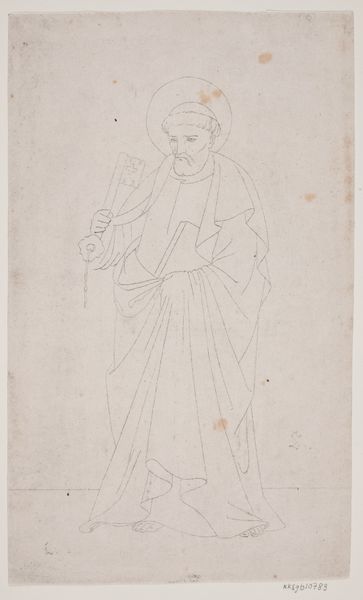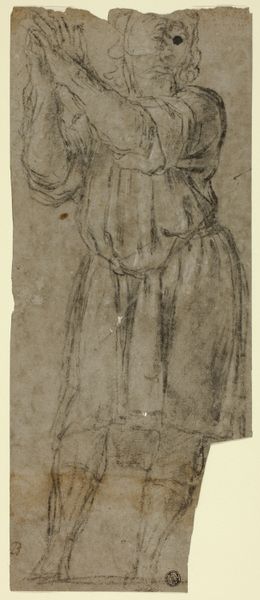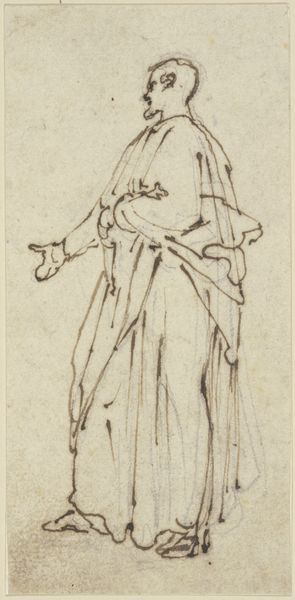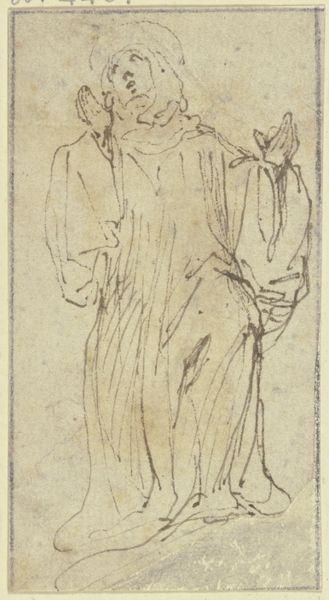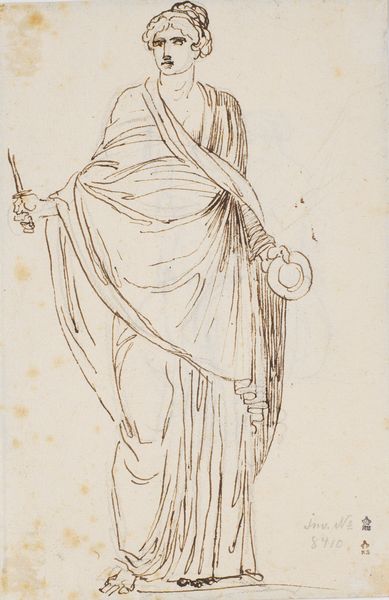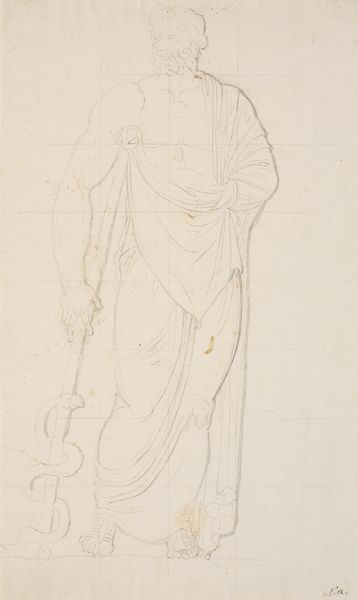
drawing, ink, pencil
#
portrait
#
drawing
#
16_19th-century
#
pencil sketch
#
figuration
#
ink
#
pencil
Copyright: Public Domain
Curator: This is a compelling, albeit incomplete, portrait sketch of Wolfgang Christoph Truchsess von Waldburg, currently held here at the Städel Museum. It is executed in both ink and pencil. Editor: The very first impression is delicate, like a ghost of a person on the page. The pencil work creates such a soft, almost ethereal quality. The unfinished quality enhances that mood for me. Curator: Precisely. The linear quality of the drawing—the economy of line—is very telling. Consider the layering, the build-up around the face, giving shape and depth without shading. Notice the structural articulation in the hands. It speaks to the formal principles that guided the artist. Editor: Yes, but beyond formal elegance, the type of labor also plays a key role in our understanding: I wonder what sort of writing material, what kind of paper, ink, or pencil, they had in order to do this? This incomplete representation evokes laboring around something for a really long time only to have it be cast away—an art of precarity in making a living through art and/or material deprivation. Curator: That's a very astute point. And in terms of historical context, it may represent a preparatory study for a more significant portrait, a commissioned piece perhaps. Look how certain areas receive more intense detail than others, like the emphasis on the hands and the face. Editor: Speaking of material contexts, notice the staining and foxing. It hints at its long material life outside its making—this speaks of time, exposure to environment. The artist started with fine lines, suggesting a detailed final rendering, and the materiality betrays his intention. It’s aged beautifully. Curator: So, despite its incomplete nature, or perhaps even because of it, the drawing presents us with an intimate look at both the sitter and the artist’s hand. Editor: Exactly! It pushes us to think beyond what we are immediately presented with. What this portrait communicates with its lines is also so important: Wolfgang Christoph's pose looks staged; the piece challenges the idea that portraits need to be perfect. A very intriguing encounter!
Comments
No comments
Be the first to comment and join the conversation on the ultimate creative platform.
